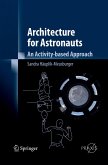In Walking in Space: Development of Space Walking Techniques, David Shayler provides a comprehensive overview and analysis of EVA techniques, available for the first time in a readable form - other than NASA publications. The author draws on original documentation, personal interviews of astronauts with experience of EVAs, and accounts by those involved in suit design, EVA planning and operations. Moving on from the pioneering of EVA techniques during the Gemini programme, the author describes the basic requirements in terms of the equipment that every spacewalker needs, the development of training techniques - currently all completed on Earth - the surface explorations of the Moon by the Apollo astronauts and the numerous activities performed by Shuttle astronauts and those aboard the Salyut and Mir Space Stations, such as satellite servicing, equipment upgrading and repair missions. He also describes the development of techniques for ensuring crew safety during EVAs and looksahead to future EVAs from the International Space Station and the development of new technology, including robotic assistance.
From the reviews:
"Shayler's book provides a step by step account of the development of this extraordinary technique and the technology that supports it. ... It is well researched and referenced, includes a bibliography and an index, and is illustrated with black-and-white photos. A significant addition is the appendix ... . This book provides a comprehensive overview and analysis of space walking and represents a useful addition to the literature." (International Space Review, September, 2005)
"This book is a concise account of the development of the techniques of extra vehicular activity, more commonly known as EVA or 'space walks'. ... tends to provide a good description of the EVA's associated with the various space programmes. ... This book meets all the high quality standards ... books published by Springer-Praxis over the past five years or so." (Jos Heyman, New Bulletin of the Astronautical Society of Western Australia, Vol. 30 (3), 2004)
"David Shayler's latest book looks at one of his favourite subjects, extra vehicular activity, and it shows. It covers all aspects of EVA in both the American and Russian programmes. ... It has a large number of illustrations, technical drawings and a complete record of all EVAs. ... This is an essential book for those who are interested in space walks, the technology as well as Moon walks." (Rex Hall, Spaceflight, Vol. 47 (5), 2005)
"David Shayler's account of the history of extravehicular activity (EVA) is an authoritative tightly packed inventory ... . The minutiae of detail are remarkable. The book has obviously been researched to a high degree ... . This is more a book for someone seriously interested in the subject ... . it is absolutely packed with information, and with its well presented 170 illustrations it is very readable. ... All in all, an excellent and definitive reference book on the subject ... ." (John Masters, Astronomy & Space, February,2005)
"Shayler's book provides a step by step account of the development of this extraordinary technique and the technology that supports it. ... It is well researched and referenced, includes a bibliography and an index, and is illustrated with black-and-white photos. A significant addition is the appendix ... . This book provides a comprehensive overview and analysis of space walking and represents a useful addition to the literature." (International Space Review, September, 2005)
"This book is a concise account of the development of the techniques of extra vehicular activity, more commonly known as EVA or 'space walks'. ... tends to provide a good description of the EVA's associated with the various space programmes. ... This book meets all the high quality standards ... books published by Springer-Praxis over the past five years or so." (Jos Heyman, New Bulletin of the Astronautical Society of Western Australia, Vol. 30 (3), 2004)
"David Shayler's latest book looks at one of his favourite subjects, extra vehicular activity, and it shows. It covers all aspects of EVA in both the American and Russian programmes. ... It has a large number of illustrations, technical drawings and a complete record of all EVAs. ... This is an essential book for those who are interested in space walks, the technology as well as Moon walks." (Rex Hall, Spaceflight, Vol. 47 (5), 2005)
"David Shayler's account of the history of extravehicular activity (EVA) is an authoritative tightly packed inventory ... . The minutiae of detail are remarkable. The book has obviously been researched to a high degree ... . This is more a book for someone seriously interested in the subject ... . it is absolutely packed with information, and with its well presented 170 illustrations it is very readable. ... All in all, an excellent and definitive reference book on the subject ... ." (John Masters, Astronomy & Space, February,2005)








